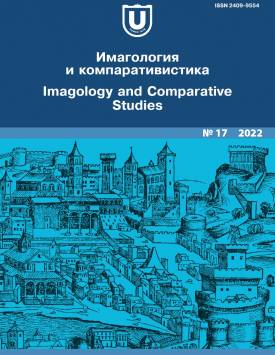Between Dostoevsky and Thomas Mann: Saint Petersburg-Venetian Texts of Gustaw Herling-Grudzinski’s White Night of Love
The author explores the architectonics of Gustaw Herling-Grudzinski’s novel White Night of Love. The author addresses complex research problems related to the system of intertextual correlations between the novel as such and the internal structure of the text. In the first part of the novel, Herling-Grudzinski converses with the 19th-century Russian literature, primarily with Dostoevsky and Chekhov. Herling-Grudzinski creates intertextual links when reflecting on the moral and psychological conceptions of Russian literature: “No other literature has such a strong belief in the power of love as a cure”. The author establishes correlations between the interpretation of this idea in Herling-Grudzinski’s text and the concept of the “sacred”/“healing” Russian literature formulated by Thomas Mann in his Tonio Kroger. The author holds that the interpretation of Dostoevsky’s White Nights in Herling-Grudzinski’s White Nights of Love served as a basis for the transformation of the Saint Petersburg text of the latter. In White Nights, the image of time is created by the Dreamer’s ideas about the fleetingness of happiness, whereas in White Night of Love the protagonist Lukasz Kleban professes total happiness. Psychological contradictions of Dostoevsky’s characters, most accurately expressed, according to Herling-Grudzinski, in the novels White Nights and Notes From the Underground, are projected on the existential psychology of the protagonist, whose happiness is overshadowed by the feelings of guilt and fear of death. The intertextuality of the second part of the novel is achieved by the artistic interpretation of the Venetian text presented by Urszula Kleban, one of the characters of the novel. She reflects on Venetian motifs in the works of Henry James and Hugo von Hoffmannsthal, as well as on the painting The Tempest by the Venetian painter Giorgione. Although Herling-Grudzinski considered Mann’s Death in Venice to be overrated, the texts of Herling-Grudzinski’s and Mann’s novels are indispensable parts of a complex dialogue. In both works, Venice is the topos of the liminal test, reflecting the mythological universality of Venice as a city located between land and sea, East and West, life and death. The main difference between the two compared texts is the image of Venice and Venetians. In Mann’s novel, the protagonist Gustav von Aschenbach obscures the image of Venice, portraying the city as if seen by a tourist and based on stereotypes. In Herling-Grudzinski’s text, the comic Tonino Tonini personifies the spirit of Venice. Tonino’s image is psychologically complex because of the coexistence of two egos - the carnival mask of Harlequin and the underlying introspective self. A combination of these two personalities is the epitome of a universal metaphysical metaphor of Venice as a theatre city. The author concludes that the dichotomous structural principle of Herling-Grudzinski’s text is revealed by the system of binary oppositions: Saint Petersburg - Venice, East - West, love - loneliness, life -death, and female - masculine. The author declares no conflicts of interests.
Keywords
Herling-Grudzinski, Dostoevsky, Thomas Mann, Saint Petersburg text, Venetian text, intertextuality, existentialism, male versus female, West versus EastAuthors
| Name | Organization | |
| Maltsev Leonid A. | Immanuel Kant Baltic Federal University | lamaltsev23@mail.ru |
References

Between Dostoevsky and Thomas Mann: Saint Petersburg-Venetian Texts of Gustaw Herling-Grudzinski’s White Night of Love | Imagologiya i komparativistika – Imagology and Comparative Studies. 2022. № 17. DOI: 10.17223/24099554/17/17
